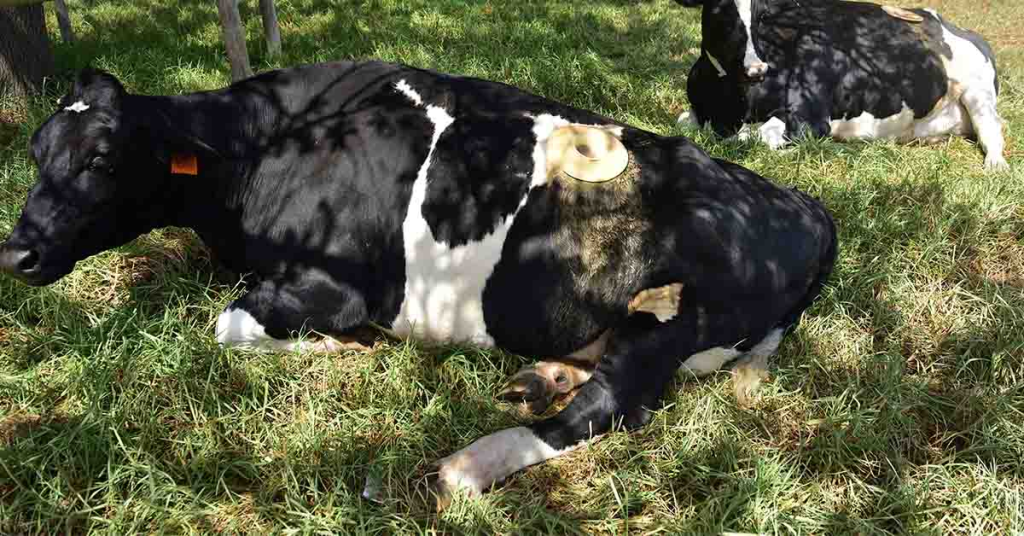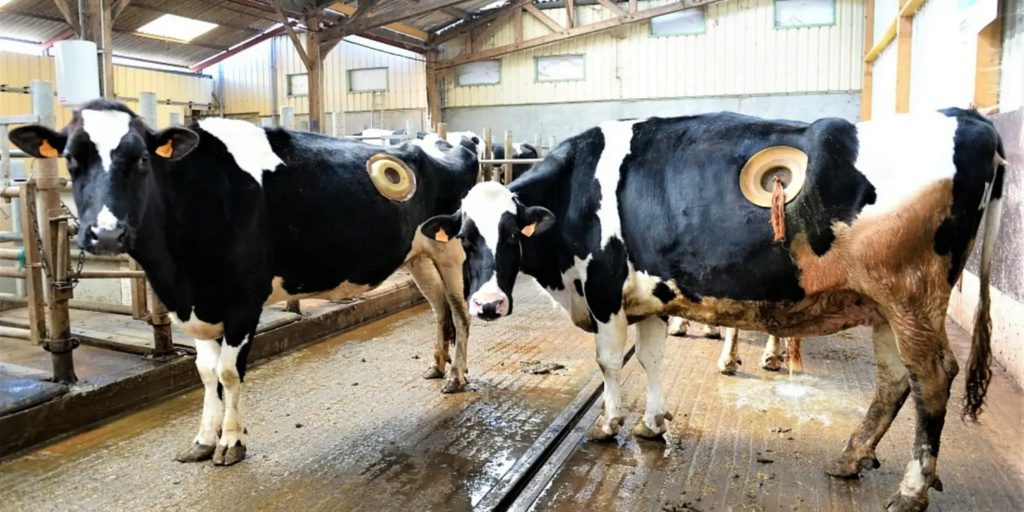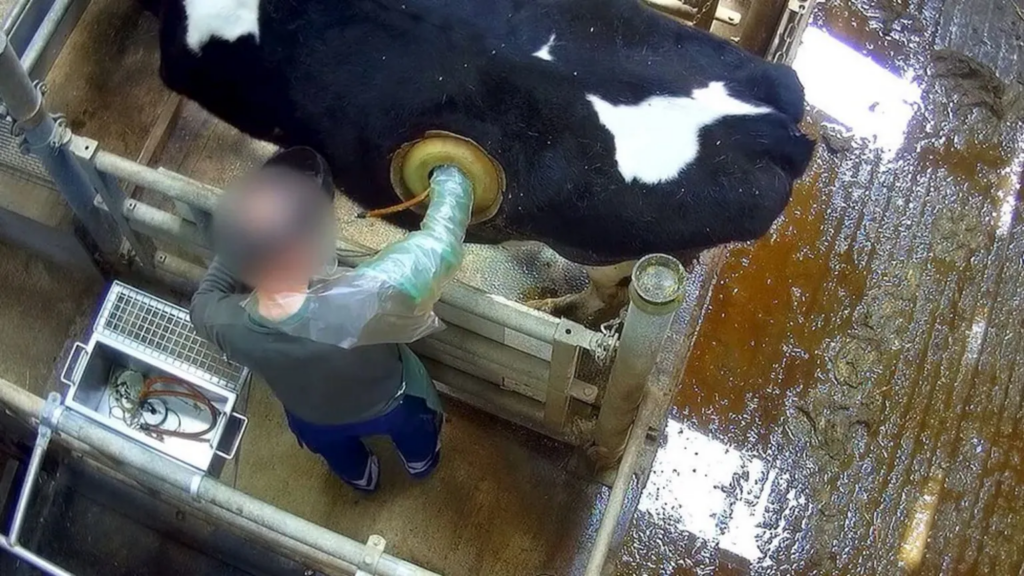When most of us hear the word “porthole,” we picture round windows on ships. But what if we told you cows can have them too? It’s strange but true. These cow “portholes,” scientifically known as cannulas or fistulas, are surgically implanted openings that give direct access to the animal’s stomach—specifically, the rumen, which is the largest of the cow’s four stomach compartments.
The goal? To let scientists and researchers study digestion in real time without constantly sedating or harming the animal. It sounds bizarre, but this practice has quietly shaped modern agriculture for almost a century.

A Practice That Dates Back to the 1920s
Believe it or not, the use of cow portholes isn’t some new-age scientific experiment. This method has been around since the 1920s. Researchers back then wanted a clearer understanding of how cows digest food and how different types of feed affect their health and productivity.
By creating a small, surgically installed window into the stomach, scientists gained front-row seats to the cow’s internal fermentation process—something no textbook or microscope could provide with the same clarity. And over time, this procedure became routine in agricultural science circles.
Video: Cow Stomachs with Portholes
Why Do Scientists Use Cow Portholes Today?
So, why go through all this effort? It all comes down to optimizing animal health, maximizing milk or meat production, and reducing environmental impact. These stomach windows let researchers directly observe how cows break down different feeds and which ingredients yield better digestion, less gas (yes, seriously), and better nutritional outcomes.
Improved digestion means healthier cows, higher milk output, and less reliance on antibiotics. Plus, understanding how a cow’s rumen works also helps in reducing methane emissions—a major concern in climate change conversations. So yes, this strange procedure has some very practical, real-world benefits.
Are Portholes Harmful to the Cows?

One of the most surprising things? Cows with fistulas often live longer than their unmodified counterparts. After the recovery period—usually around four to six weeks—these cows go about their lives like normal. They eat, graze, rest, and interact with other cows.
That said, the initial surgery does involve anesthesia and post-operative care. While studies claim these cows don’t suffer long-term pain, critics question the ethics of the procedure itself. It’s a conversation that’s far from black and white.
The Push for Sustainable Farming and Fewer Emissions
Let’s zoom out a bit. Why does any of this matter to people outside the agricultural world? Because livestock farming is one of the largest sources of methane emissions on the planet. If scientists can use portholes to figure out how to make cows produce less gas or digest food more efficiently, it could dramatically cut greenhouse gases linked to climate change.
In a world trying to juggle food security and environmental health, every bit counts. That’s why agricultural researchers defend this practice: it gives them data they simply can’t get any other way—at least not yet.
Animal Rights Groups Aren’t Staying Quiet

Of course, not everyone sees it this way. Animal rights organizations like France’s L214 and PETA have called for an end to cow portholing, labeling it as invasive, outdated, and inhumane. They argue that the procedure prioritizes scientific data over the well-being of the animal and exploits them in the name of industry.
Photos and videos of people reaching into cows’ stomachs during educational demos at agricultural fairs only fuel the fire. While these events are meant to teach, many see them as unnecessary and even grotesque spectacles.
Are There Alternatives on the Horizon?
Video: Why Cows Have Portholes?
Yes, and they’re getting better every year. Some labs have started developing artificial rumen systems that replicate a cow’s digestion. These fermentation models help scientists study the same process without needing a live animal. The challenge? They’re not perfect yet. Real-time biological feedback from a living cow still provides unmatched insights into how the digestive system reacts to variables like heat, stress, or new diets.
Until technology catches up, many researchers believe live cannulated cows offer the most accurate results. But there’s hope that innovation will one day replace the need for such invasive methods entirely.
A Window Into Controversy and Innovation
Cow portholes walk a tightrope between being a scientific marvel and an ethical red flag. On one hand, they’ve helped improve farming practices, reduce environmental damage, and boost animal health. On the other hand, they raise hard questions about how far we should go in the name of progress.
It’s a perfect example of the clash between ethics and efficiency in modern agriculture. And whether you’re fascinated, appalled, or somewhere in between, the topic definitely opens a window—literally and figuratively—into the hidden world of food science.
Conclusion: Strange Science or Smart Sustainability?

The use of portholes in cows is as fascinating as it is controversial. While it might seem shocking at first glance, this procedure has quietly fueled decades of advancements in livestock science. Whether you’re cheering on the science or questioning its morality, one thing is clear: the conversation around cow portholes isn’t going away anytime soon.
As the world seeks more sustainable ways to produce food, balance animal welfare, and reduce our environmental footprint, these stomach windows might just be the weird bridge between tradition and tomorrow.


